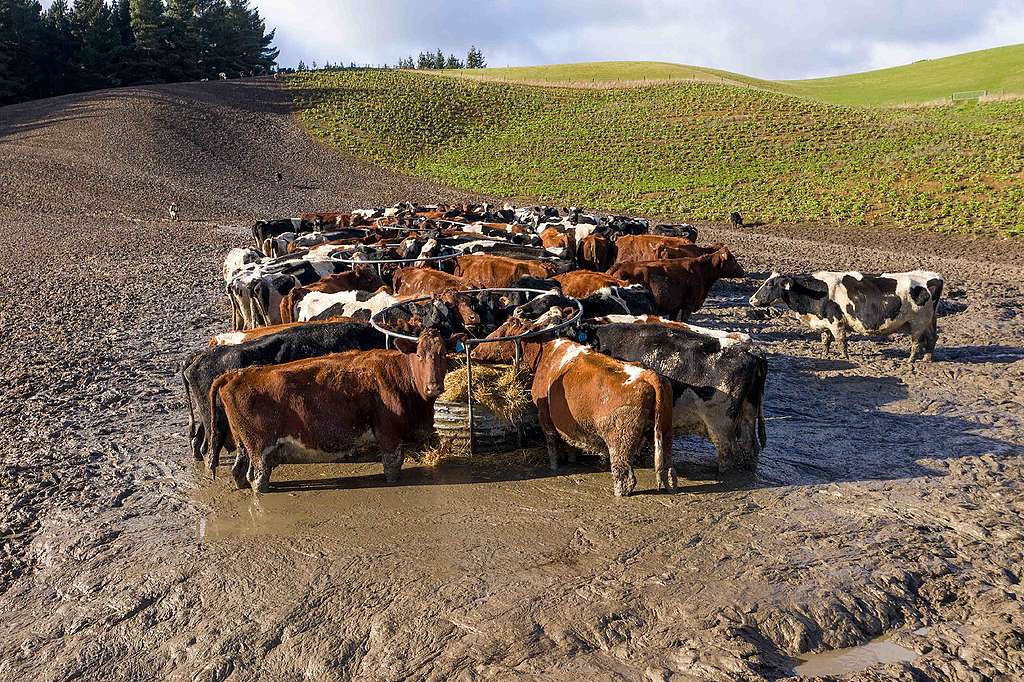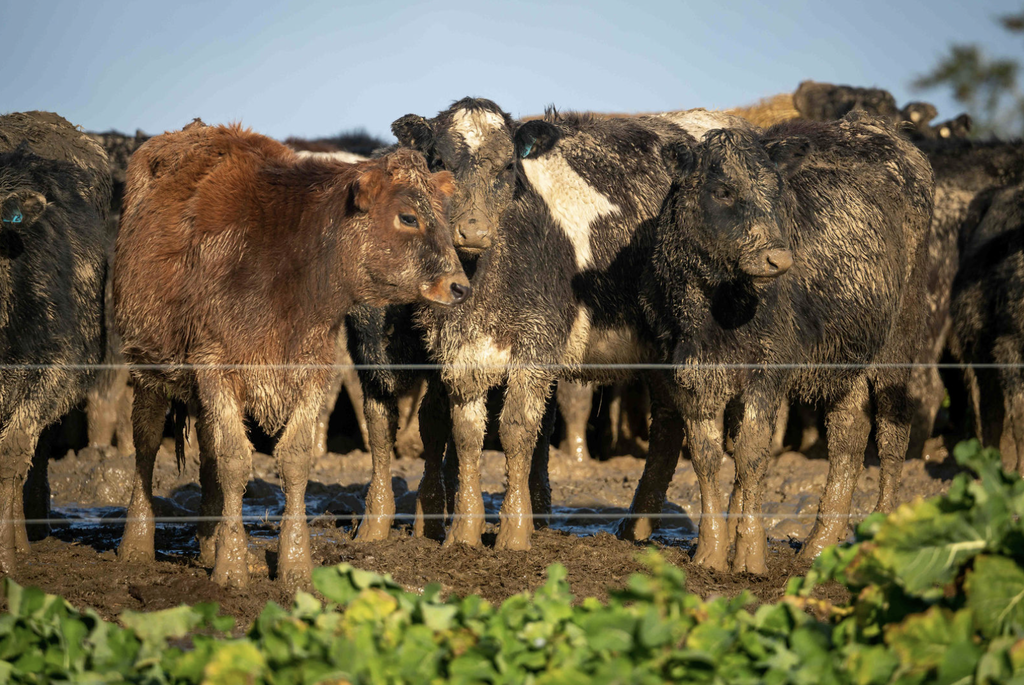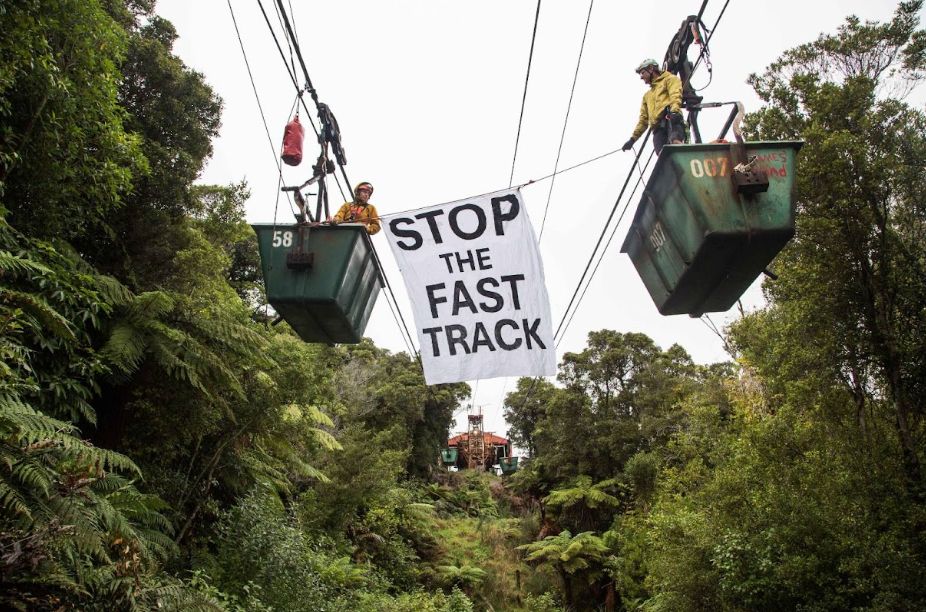Since the start of the dairy boom in the 1990s, cow numbers in New Zealand have doubled. In some areas, the numbers have grown even more dramatically. In Canterbury, they have increased tenfold. Southland has seen an even starker intensification, with the number of cows increasing 16 times.
Several factors are responsible for fueling this dairy expansion. Irrigation enabled dairying in Canterbury alone takes around 2 million Olympic-size swimming pool’s worth of irrigation water each year, largely in areas with stoney soils or low rainfall, unsuitable for dairy farming. New Zealand is the biggest global importer of palm kernel expeller from Indonesian rainforests, which is used for cow feed to prop up more cows than nature can handle.
But there’s one thing in particular driving dairy herd expansion and emissions. The use of synthetic nitrogen fertiliser. This has increased almost sevenfold since 1990. Synthetic nitrogen fertiliser is like crack cocaine for plants. It is a departure from traditional farming and it is destructive. Synthetic nitrogen fertiliser produces more than twice the emissions of domestic aviation in New Zealand, chokes waterways with algae, and drinking water with cancer-causing nitrate. It enables the reckless explosion of cow numbers, which drives New Zealand’s emissions to be among the highest per capita in the OECD.

In terms of climate pollution, industrial dairy is to New Zealand what coal is to Australia or tar sands are to Canada. Agriculture is responsible for half of New Zealand’s emissions. So, it’s no wonder the latest Intergovernmental Panel on Climate Change (IPCC) report reminds us that a shift to plant-based diets offers a positive pathway for reducing emissions.
Intensive dairy is a false economy. While the benefits accrue to small numbers in the industry, the costs are externalised. The costs often fall upon those who have done least to cause climate change, and those who are already most vulnerable.
Selwyn District Council alone estimated it could cost $322 million to implement nitrate water treatment at its sites – almost five times their annual rate take. If anyone is paying the costs of this nitrate contamination, it is certainly not the industrial dairy industry. Every year, approximately 100 people will suffer and 40 will die, from bowel cancer, after drinking nitrate-contaminated water. The costs of nitrate related bowel cancer alone are estimated at $64.1million NZD per annum. Preterm births from nitrate laden drinking water bring additional costs.
There are the costs to the climate, of billions of dollars of infrastructure being destroyed by extreme weather events and sea level rise. There are costs to our rivers, and to the soil. These costs are far greater than the profit intensive dairy makes for New Zealand. There can be no winners in an ecosystem and an economy that farms animals beyond the planet’s biophysical limits.
Already, climate change and biodiversity thresholds have been exceeded. Feedback loops mean life on earth is under threat. The IPCC says we have until 2025 to act.
There are no techno-fixes to address methane from cows, so reducing the dairy herd is essential. Around $200million has been spent on research and development to reduce emissions over the last few decades, but still dairy emissions increase. New Zealand is among the world’s worst performers on emissions reduction.
Breeding fewer cows will turn off the tap on dairy emissions. It’s clear the herd is oversupplied. Millions of cows are culled for being surplus to requirements every year, including two million calves killed within four days of birth, solely for being born male.
It’s also no solution to simply expect herd numbers to drop and for each cow to produce more to sustain current production levels. Just as it’s wrong to farm beyond nature’s limits, it’s wrong for the dairy industry to keep farming cows beyond their physical limits too.
It’s more efficient to grow crops to feed people directly, than it is to grow crops to feed cows with all the consequent long-term environmental and public health harm. Other countries such as the Netherlands have acknowledged this and begun buying out farmers to reduce agricultural pollution. New Zealand is falling behind.
New Zealand has too many cows, too many emissions, too much water pollution, too much bowel cancer in rural communities and the Government is making too many political concessions to industrial dairy. The Government must get serious about the climate – the science is clear. The only real way to ease the burden on water, land and the climate, is to phase out synthetic nitrogen fertiliser and halve the herd.

Call on the Government to halve the dairy herd to reduce the impacts on freshwater, biodiversity, climate and people’s health.
Take Action



